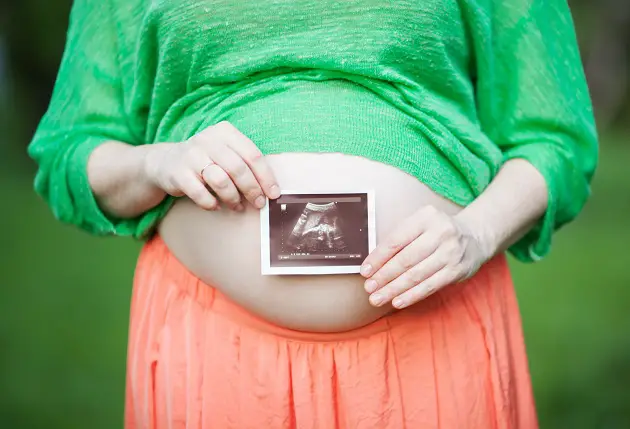Whether you are contemplating about getting pregnant or you just discovered how your uterus is aligned, learning more is vital to put your mind at ease.
When most ladies learn that they have a retroverted or anteverted uterus, the questions that immediately spring are:
- Can I get pregnant?
- Will it affect my baby’s health?
- What causes it?
- Is the appearance of my pregnant belly going to change?
- Does it pose a risk to me?
- Does it have an effect on my menstruation cycle?
This article will shed some light on retroverted and anteverted uterus, what they mean, and their implication.
Quick facts:
- about 74% of females have an anteverted uterus while the remaining 26% has a retroverted uterus
- an anteverted uterus should not have an effect on your health
- a retroverted uterus does not have symptoms, although painful sexual intercourse may occur
An Anteverted Uterus
This is a uterus that curves forwards at the cervix towards the abdomen.
The far majority of ladies have this type of uterus! A 2004 study by the Stanford-School of Medicine’s Department of Obstetrics and Gynecology found that about 74% of females have an anteverted uterus while the remaining 26% has a retroverted uterus.(1)
A retroverted uterus is considered a more serious condition than the anteverted uterus.
Like most parts of your body, the uterus may come in different shapes and sizes.
Nevertheless, an anteverted uterus should not have an effect on your health.
Symptoms of an anteverted uterus

You are unlikely to notice symptoms of an anteverted uterus.
But, if the forward tilt is too severe, you may feel pain or pressure at the front of the pelvis.
Visit a doctor immediately!
What is a Retroverted Uterus?
Commonly referred to as a tilted uterus, this is a uterus that assumes a backward curvature at the cervix instead of the typical forward position.
Symptoms of a Retroverted Uterus
Occasionally, females with a retroverted uterus may experience no symptoms and may be unaware of their condition.
However, the symptoms of a tilted uterus manifest themselves through:(2)
- Pain in your lower back or the female genital organ during sex
- Having trouble inserting tampons
- Pain during menstruation
- Urinary tract infections
- An increase in bladder pressure and urinary frequency
- A protrusion of the lower abdomen
- Mild incontinence
Retroverted Uterus and Fertility/Pregnancy
Typically, a retroverted uterus will not affect a female’s ability to conceive.(3)
Nonetheless, a tilted uterus is at times linked to other conditions which affect fertility potential.
They include:
- Fibroids
- Pelvic inflammatory disease
- Endometriosis
Fibroids and endometriosis are usually correctable or treatable with the help of minor invasive procedures.
When diagnosed early, the pelvic inflammatory disease can be treated with antibiotics.
When necessary, in vitro fertilization (IVF), intrauterine insemination (IUI) or other infertility treatments can assist ladies with the aforementioned diagnoses to achieve pregnancy.
However, a retroverted uterus does not affect the feasibility of a pregnancy.
What it does, though, is it creates more pressure on the bladder during the initial trimester. You might also experience difficulty in urinating and increased incontinence while some women may experience back pain.
Also, the uterus may be harder to see via ultrasound up until the pregnancy enlarges it.
Thus, your physician may have to use transvaginal ultrasounds to monitor the progress of the pregnancy during the first trimester.
Between weeks 10 and 12, your uterus should expand and straighten out and will no longer be curved backward.
At times, due to adhesions and other factors, your uterus may fail to make this shift and remain anchored to the pelvis.
This raises the risk of a miscarriage. It is referred to as an incarcerated uterus and is quite rare.
An incarcerated uterus can be fixed if discovered early thus reducing the risk of a miscarriage.
If you’re pregnant and experience:
- Pain near your arteria rectalis or in your stomach
- A consistent inability to pass urine
- Incontinence
- Constipation
Visit your GP immediately as they could be signals of incarceration of the uterus!
This condition can be identified during an ultrasound or pelvic exam. The third trimester should have no hitches although females with a retroverted uterus could experience labor pains in the back.
Anteverted Uterus and Fertility/Pregnancy

Your uterus’s shape, for the most part, does not impact the sperm’s ability to reach an egg.
On rare occasions, an extremely curved uterus may interfere with the process.
Retroverted Uterus and Sex
A retroverted uterus should not hinder sexual enjoyment or sensation.
In some instances, sexual intercourse can become painful. Certain sexual positions may amplify this discomfort and thus changing them could alleviate the pain.
The uterus, along with the ovaries, is positioned quite low in the pelvis and rigorous sex may have the head of the male genital organ brushing against the uterus causing tears, bruises, and pain.
If you feel pain in every sexual position, discuss it with the doctor.
Anteverted Uterus and Sex
An anteverted uterus does not affect your sex life. Nevertheless, discomforts should not be taken lightly.
Causes of a Retroverted Uterus
The retroverted uterus is a variation of the pelvic anatomy.
Thus, you may either be born with it or acquire the tilt as you mature.
Also, genetics may play a role. On other occasions, a tilted uterus can be linked to underlying conditions that are associated with pelvic adhesions or scarring.
They include:
- Fibroids. Uterine fibroids may cause the uterus to misshapen, get stuck, or tilt backward.
- Endometriosis. Endometrial adhesions or scar tissue may result in the sticking of the uterus in a backward position, almost like it has been glued there.
- History of pelvic surgery. Results in scarring.
- Pelvic Inflammatory Disease: This condition, when untreated, may cause scarring and have similar implications as endometriosis.
- Prior pregnancy. A previous pregnancy may have overstretched the ligaments that hold the uterus in place, and if they remain that way, the uterus could tip backward.
Causes of an Anteverted Uterus
Most females are born this way.
A pregnancy and childbirth could change the shape of a uterus making it more anteverted.
On rare occasions, scar tissue developing from conditions such as endometriosis can cause an anteverted uterine position.
According to an article published in American Journal of Roentgenology “an anteverted retroflexed uterine position was found in 27% of women after cesarean delivery”.(4)
Diagnosis and Treatment of a Retroverted Uterus

The physician can recognize and diagnose a retroverted uterus during a routine pelvic exam.
Discuss with them about any symptoms that concern you. For some ladies, you may first get to know of your retroverted uterus during your pregnancy.
This is because an ultrasound can identify a tilted uterus.
Treatment
Asymptomatic individuals do not require any treatment. But, if you are showing symptoms and are getting concerned, consult with your GP for treatment options.
Often, treatment is not necessary.
Therapy
Your doctor may, at times, be able to manipulate the uterus into an upright position.
In this case, there are some exercises specifically designed to strengthen the tendons and ligaments which hold the uterus in an upright position. Performing them could be beneficial.
These exercises include:
- Kegels
- Pelvic Contractions. This exercise aims to strengthen your pelvic floor muscles. While lying on your back, put your arms at your side and relax. Now lift your buttocks as you inhale deeply. Hold then exhale as you release. Do this for 10-15 repetitions.
- Knee Chest. While lying on your back with bent knees and both feet on the ground, slowly raise one knee to your chest while pulling on it with both arms. Hold that position for 20 seconds then switch legs. However, if the reason for your retroverted uterus is scarring or adhesions, these exercises may fail to work.
Other treatment options include:
Pessary Devices
These are small instruments designed out of plastic or silicone.
They are inserted into the female genital organ to assist in propping the uterus into an upright position. Pessaries can either be used on a permanent or temporary basis.
Yet, Pessaries have been linked to infections when left in for a long-term…
Surgical Techniques
Some cases might need surgery to reposition the uterus to eliminate or reduce the pain.
The procedures include:
- Uterine Suspension Procedures
- Uplift Procedure
Diagnosis and Treatment of an Anteverted Uterus
An ultrasound or pelvic exam can determine the extent of your forward tilt.
Do you need treatment?
An anteverted uterus does not require treatment.
In fact, there is no procedure or medicine to correct an anteverted uterus.
With a forward tilting uterus, you should have a regular and pain-free life.
Closing Thoughts
On most occasions, a retroverted uterus does not have symptoms, although painful sexual intercourse may occur.
If you experience symptoms of a tilted uterus, there are available treatment options which might be of assistance.
Additionally, a retroverted uterus rarely affects pregnancy or fertility. But, it has been linked to conditions that hurt fertility potential.
An anteverted uterus, on the other hand, is considered normal.
It is merely an anatomic development. It should not affect your sex-life, health, or ability to get pregnant.
Simply put, it is as natural as the length of your nose.
Do not worry because you have an anteverted uterus. Nevertheless, speak to your gynecologist if you have concerns.
To maintain good reproductive and sexual health, specialists recommend an annual Pap smear once you turn 21.
This way, uterine diseases can be diagnosed and treated early enough.
For more information here’s our previously written article about an anteverted uterus.
Resources
(1)http://www.ncbi.nlm.nih.gov/pubmed/14998953
(2)https://www.ncbi.nlm.nih.gov/pmc/articles/PMC2672273/
(3)https://www.betterhealth.vic.gov.au/health/conditionsandtreatments/retroverted-uterus
(4)https://www.ncbi.nlm.nih.gov/pubmed/24951223
Leave Feedback: Was this article helpful?

